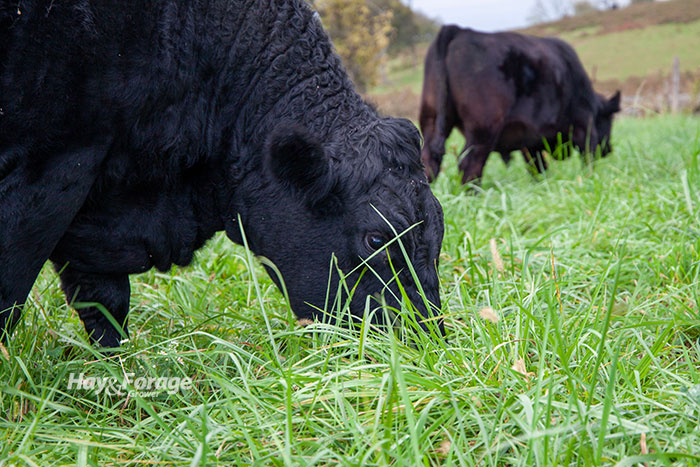
The positive and negative characteristics of tall fescue are two sides of the same coin. This cool-season perennial grass can provide ample forage for grazing in the spring and stockpiling in the fall; however, tall fescue’s high productivity and stand persistence is attributed to a toxic endophyte that lives in plant cell walls.
“Fescue can serve as a main forage supply, but there are some things that need to be considered to mitigate toxic endophyte,” states Jason Duggin, an animal and dairy science specialist with the University of Georgia Extension. He compares tall fescue to a new gadget advertised on a TV commercial — it usually looks promising, but it might fail to meet grazing expectations.
Endophyte-infected tall fescue varieties, like Kentucky-31, contain toxic alkaloids that cause vasoconstriction in animals’ blood vessels. Duggin notes some implications of endophyte toxicosis include ragged hair coats, lower body condition scores, and poor conception rates, which can influence breeding and calving seasons.
“Breeding seasons in May and June can have very disappointing conception rates when toxic endophyte fescue is the main forage,” Duggin explains. “Although fall calving helps, the growing calves and replacement heifers will be victims come spring, enduring long-term effects,” he adds.
Results of renovation
One solution to alleviate endophyte toxicosis in cattle is renovating tall fescue fields to a novel endophyte variety. Duggin notes research in Georgia and Arkansas that shows pregnancy rates for cattle grazing novel endophyte tall fescue versus toxic tall fescue were 85% and 45%, respectively. Moreover, calving rates for cows grazing novel endophyte tall fescue were 91%, whereas cows grazing toxic tall fescue had a calving rate of 64%.
“Removing toxic fescue and planting a novel variety or some other grass is costly and has some risk, but it can certainly be a worthwhile project if conception rates are improved by 10% over the long term,” Duggin states.
The same research shows calves grazing novel endophyte tall fescue gained as much as 50 pounds more than those grazing toxic tall fescue. Stocker cattle grazing novel endophyte tall fescue also had greater average daily gains of about 0.5 pound per day in the fall and 1 pound per day in the spring.
If renovating pastures to a novel endophyte variety is not feasible, Duggin suggests incorporating clover into tall fescue stands to ease some of the side effects of endophyte toxicosis. Red clover has been shown to reduce vasoconstriction caused by the toxic alkaloids in tall fescue, helping regulate animals’ blood flow and body temperature.
Mechanically or chemically removing seedheads where alkaloids accumulate can also limit the adverse effects of endophyte toxicosis. Duggin suggests adjusting herd genetics by selecting animals with greater tolerance to endophyte toxicosis can also improve animal performance and productivity.

